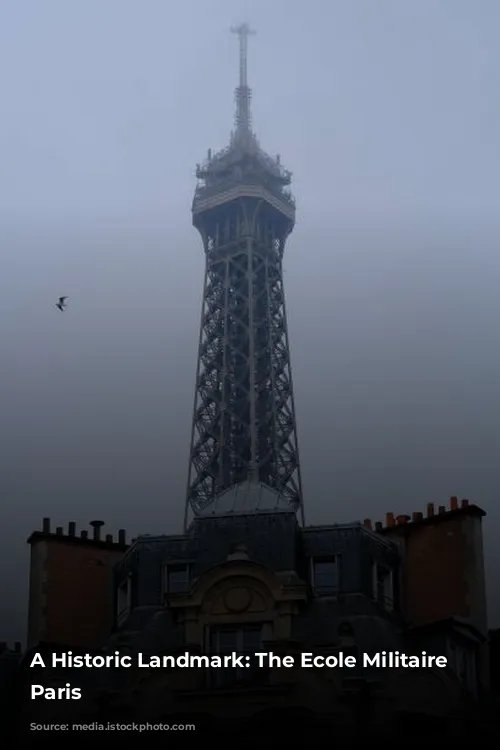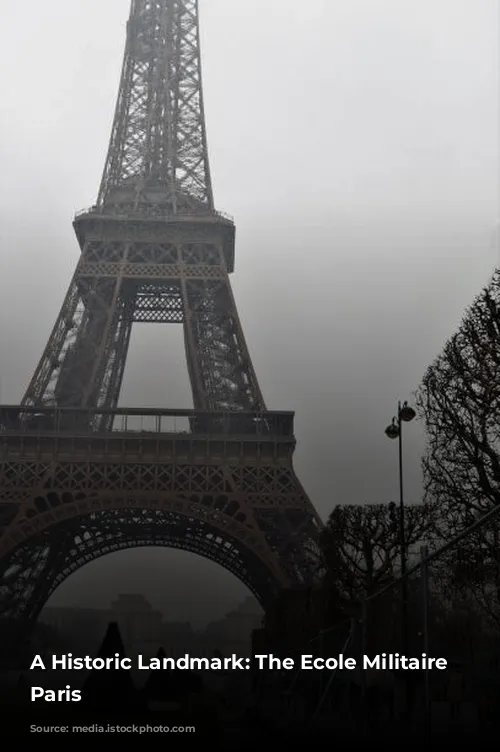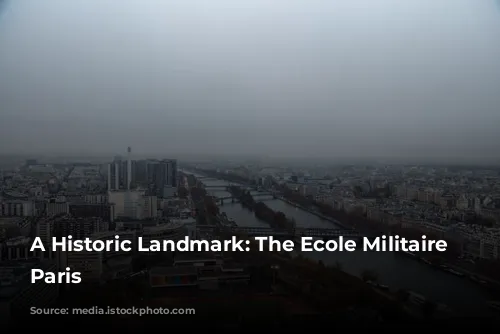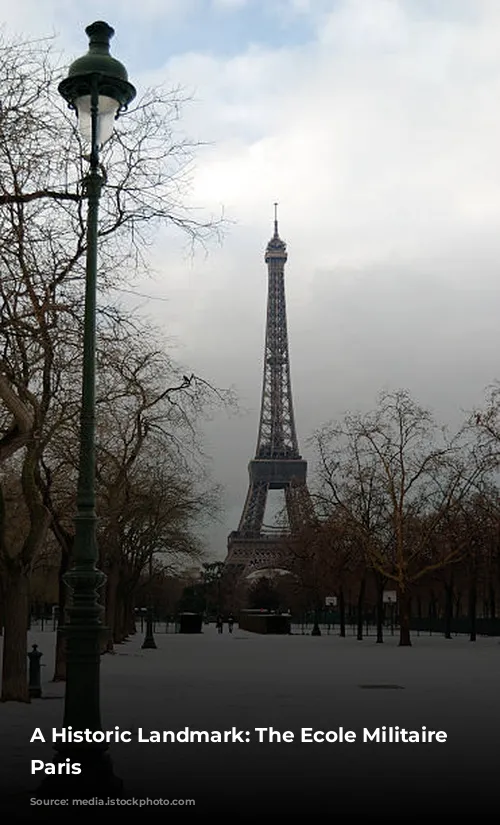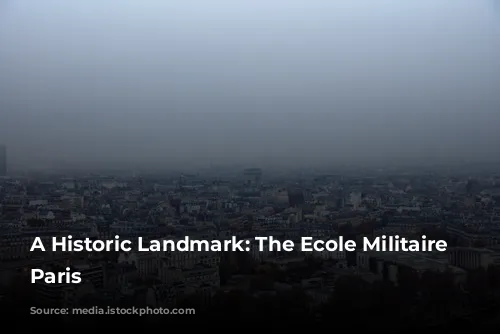The Ecole Militaire in Paris, located at the end of the Champ-de-Mars park in the 7th district, is a sight to behold. This impressive building, a masterpiece of classical architecture from the 18th century, was built in 1751 during the reign of King Louis XV. Today, it houses various organizations dedicated to higher military education, making it a hub for France’s military training.
While the Ecole Militaire stands proudly in the heart of Paris, its history is deeply intertwined with the evolution of the French Army, showcasing the nation’s military legacy.
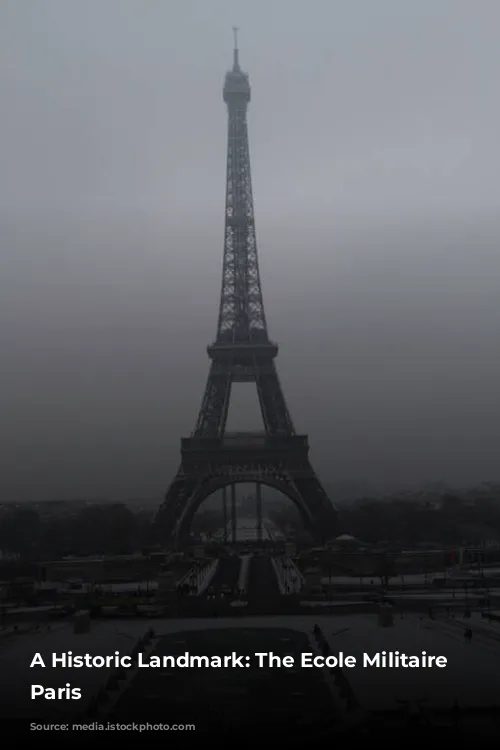
A Prime Location in the City of Lights
The Ecole Militaire boasts a prime location, nestled on the Trocadero-Breteuil axis, a vibrant thoroughfare that connects the Palais de Chaillot to the Place de Breteuil, passing through the iconic Iéna bridge and the Champ-de-Mars. Surrounded by the Eiffel Tower and UNESCO headquarters, the school stands out as a testament to classical architecture and French heritage.
The school’s location on the Champ-de-Mars, a vast park that played host to the annual troop review, further emphasizes its connection to the French Army and the nation’s military history.
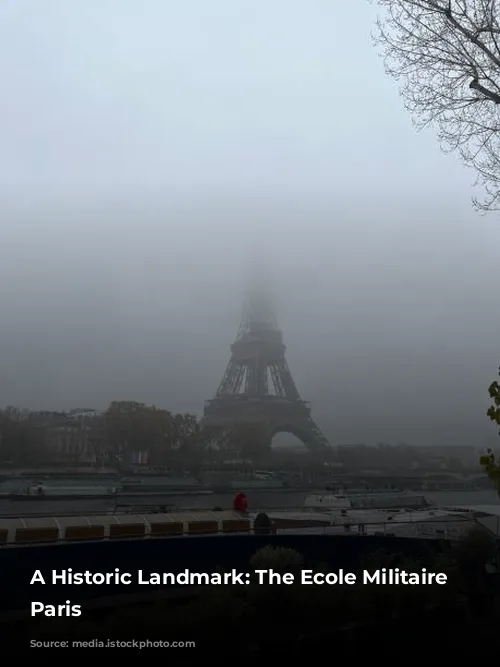
From Royal Foundations to Napoleon’s Early Years
The Ecole Militaire was established in 1750 by King Louis XV as an institution to train young noblemen from less affluent backgrounds. It was envisioned as a prestigious institution for the education of 500 future military leaders. To gain admission to the Royal Military School of Paris, aspiring cadets had to excel in a competitive national examination, demonstrating their aptitude for a military career.
Napoleon Bonaparte, the future emperor of France, was a student at the Ecole Militaire from 1784 to 1785. After attending the military school in Brienne, he excelled in mathematics but struggled with languages, particularly French, due to his strong Corsican accent. His time at the Ecole Militaire marked the beginning of his military career, a journey that would lead him to unparalleled heights.
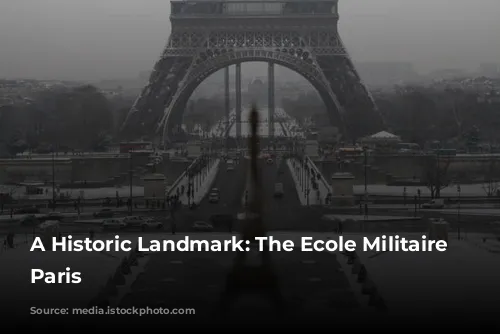
A Turbulent Past and a Resurgence as a Military Academy
The Ecole Militaire, despite its grand beginnings, faced funding challenges. In 1760, the school was divided into the Military School of Paris and the Collège Royal de la Flèche. However, construction continued, and the chapel of Saint Louis de l’Ecole was laid in 1768.
By 1780, the Ecole Militaire was complete. However, just seven years later, in 1787, the school was closed. The French Revolution brought even more uncertainty, with the building being used for various purposes, including a barracks for Napoleon’s Imperial Guard.
It was not until the late 19th century that the Ecole Militaire returned to its original purpose. In 1878, the École supérieure de guerre (War Academy) was established within its walls. This was followed by the founding of the Centre des Hautes Etudes Militaires in 1911. Since then, the Ecole Militaire has continued to serve as a vital institution for training future military leaders.
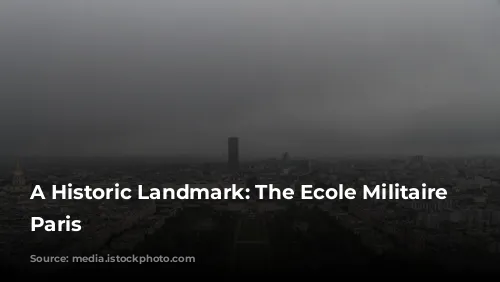
A Center of Excellence for Military Education
Today, the Ecole Militaire, now referred to as the Ecole Supérieure Militaire de Paris, is a prestigious institution that selects 150 to 200 senior officers each year for specialized training. These officers have already proven their leadership skills in their home armies, gaining valuable experience in operational and command roles. They are joined by 80 to 100 foreign trainees from around the world, creating a diverse and enriching learning environment.
The Ecole Militaire brings together various organizations dedicated to higher military education under one roof, including the Center for Advanced Military Studies (CHEM), the War College, the Institute of Strategic Research of the Military School (IRSEM), and the Command Doctrine and Teaching Center for the Army (CDEC).
The Ecole Militaire also houses several national institutes, including the Institute for Advanced National Defense Studies (IHEDN) and the National Institute for Advanced Security and Justice Studies (INHESJ), further reinforcing its status as a leading center for strategic thought and national security.

An Architectural Masterpiece with Historical Echoes
The Ecole Militaire is as much a testament to classical architecture as it is a monument to French military history. The facade of the central pavilion is adorned with statues, bas-reliefs, and trophies that celebrate themes of victory, peace, and strength, echoing the values and aspirations of the French Army.
The central part of the school, known as “the Castle”, is distinguished by its quadrangular dome, reminiscent of the architecture of the Louvre. Inside, historical echoes reverberate through the halls.
The “Salon des Maréchaux” served as Bonaparte’s office in 1795, a reminder of his time as a student and his rise to power. A bullet hole in a mirror, left by the troops of General Douay during the Commune of 1871, is a chilling reminder of the turbulent history that unfolded within the walls of the school.
In the main courtyard, the clock, created by Jean-André Lepaute, stands as a testament to the craftsmanship of the 18th century. The Saint-Louis Chapel, restored in 1952, houses the remains of Pâris Duverney, the founder of the Ecole Militaire. The library, housed in “le Château”, is a treasure trove of knowledge, featuring carved woodwork, paintings, and marble fireplaces.
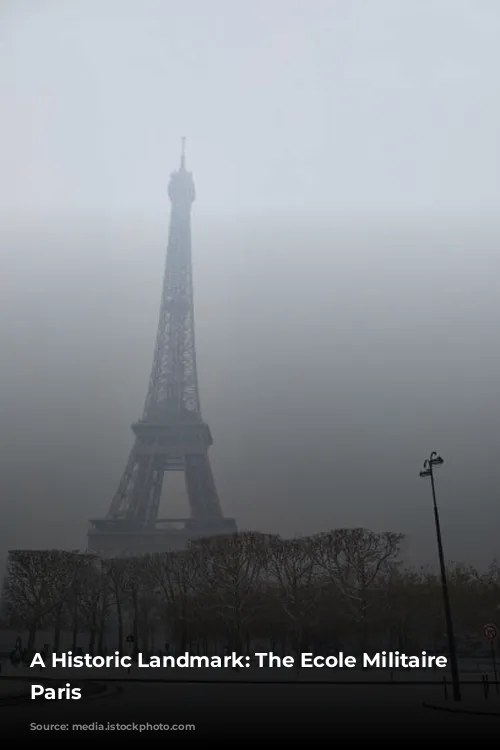
A Legacy that Continues to Shape France’s Military Future
The Ecole Militaire of Paris continues to stand as a proud symbol of France’s military heritage. From its humble beginnings as a royal institution to its modern role as a premier center for higher military education, the Ecole Militaire has played a pivotal role in shaping the French Army and its strategic thinking.
The school stands as a reminder of the importance of education and training in the military, and its legacy will continue to inspire and shape future generations of French military leaders.
